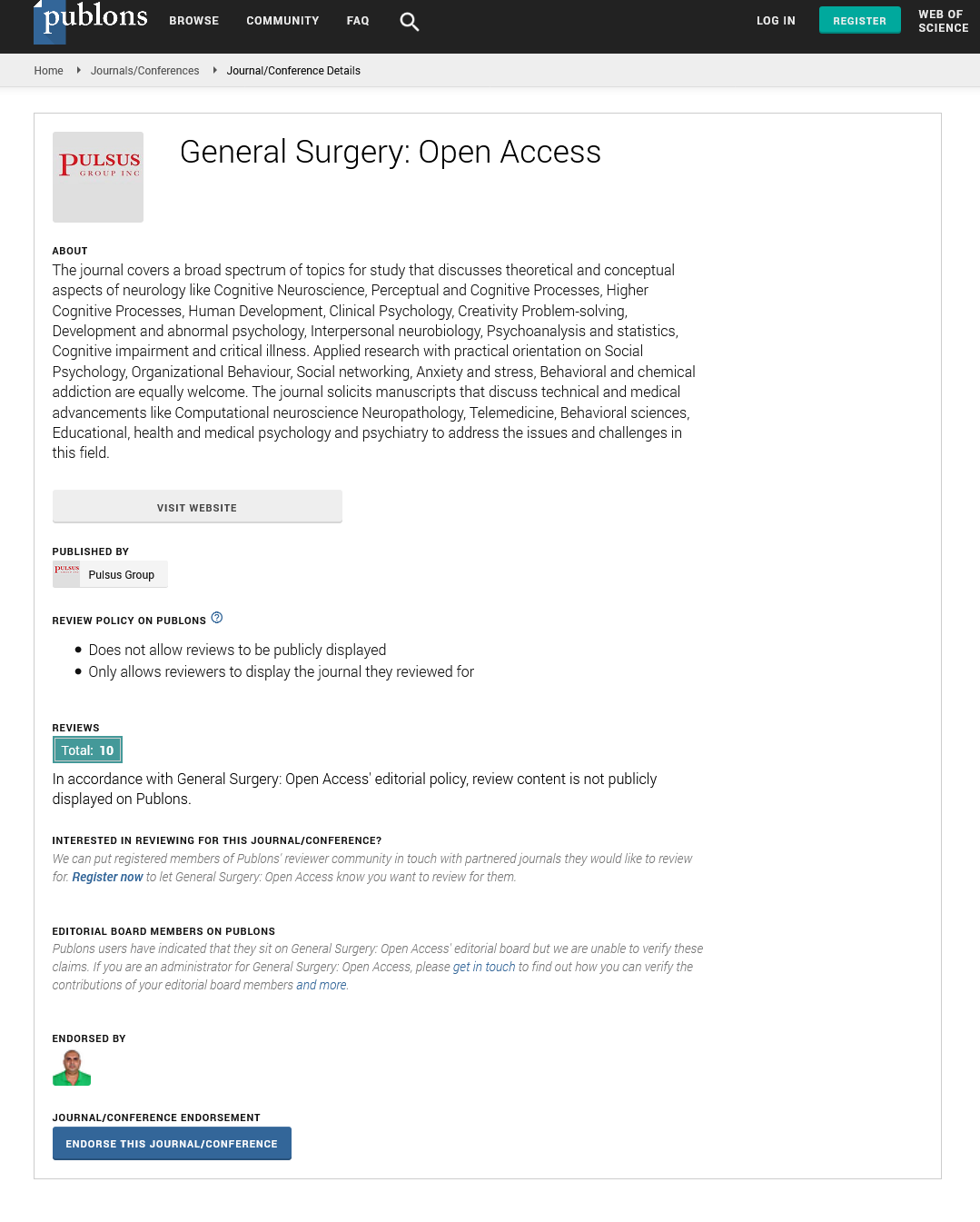Role of anesthesia during surgery
Received: 05-Mar-2021 Accepted Date: Mar 19, 2021; Published: 26-Mar-2021
Citation: Cheon A. Role of anesthesia during surgery. Gen Surg: Open Access. 2021;4(2):7.
This open-access article is distributed under the terms of the Creative Commons Attribution Non-Commercial License (CC BY-NC) (http://creativecommons.org/licenses/by-nc/4.0/), which permits reuse, distribution and reproduction of the article, provided that the original work is properly cited and the reuse is restricted to noncommercial purposes. For commercial reuse, contact reprints@pulsus.com
Description
During surgery, you will be given some type of anesthesia, which are drugs given to calm agony and anesthesia during surgery. Prior to medical procedure, you will meet with the doctor anesthesiologist or attendant anesthetist. The anesthesiologist will survey your ailment and history to design the fitting sedative for medical procedure.
There are different types of anesthesia. The kind of sedation you get will rely upon the sort of a medical procedure and your ailment. Tranquilizers (to make you lethargic) and analgesics (to facilitate the agony) may likewise be utilized as a feature of the sedation interaction. The various sorts of sedation incorporate the accompanying:
Local anesthesia is an anesthetic specialist given to briefly stop the feeling of torment in a specific territory of the body. You stay cognizant during a nearby anesthetic. For minor medical procedure, a nearby anesthetic can be given through infusion to the site, or permitted to assimilate into the skin. Be that as it may, when a huge territory should be desensitized, or if a nearby sedative infusion won't enter adequately profound, specialists may utilize different kinds of sedation.
Regional anesthesia is utilized to numb just the bit of the body that will go through the medical procedure. Generally an infusion of local anesthetic is given nearby nerves that give feeling to that piece of the body.
A spinal anesthetic is utilized for lower stomach, pelvic, rectal, or lower limit a medical procedure. This sort of anesthesia includes infusing a solitary portion of the sedative medication into the territory that encompasses the spinal line. The infusion is made into the lower back, underneath the finish of the spinal string, and causes deadness in the lower body. This sort of sedation is frequently utilized in muscular methods of the lower furthest points.
The epidural anesthetic is like a spinal anesthetic and is generally utilized for a medical procedure of the lower appendages and during work and labor. This sort of anesthesia includes constantly implanting an anesthetic medication through a slight catheter (empty cylinder). The catheter is set into the space that encompasses the spinal line in the lower back, causing deadness in the lower body. Epidural anesthesia may likewise be utilized for chest or stomach a medical procedure. For this situation, the anesthetic medication is infused at a higher area in the back to numb the chest and stomach zones.
General anesthesia is an anesthetic used to actuate obviousness during medical procedure. The medication is either breathed in through a breathing cover or cylinder, or given through an intravenous (IV) line. A breathing cylinder might be embedded into the windpipe to keep up legitimate breathing during a medical procedure. When the medical procedure is finished, the anesthesiologist stops the anesthetic and you are taken to the recuperation space for additional checking.
Anesthesiologists are the specialists prepared to oversee and oversee sedation given during a surgery. They are additionally liable for overseeing and treating changes in your basic life capacities - breathing, pulse, and circulatory strain - as they are influenced by the medical procedure being performed. Further, they analyse and treat any clinical issues that may emerge during and following a medical procedure.
Prior to medical procedure, the anesthesiologist will assess your ailment and define a sedative arrangement that considers your state of being. It is indispensable that the anesthesiologist knows as much about your clinical history, way of life, and drugs, including over-the-counter and home grown enhancements, as could be expected.






